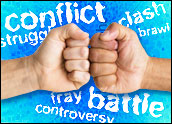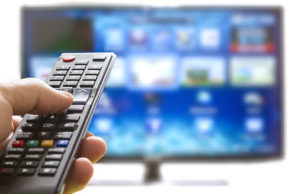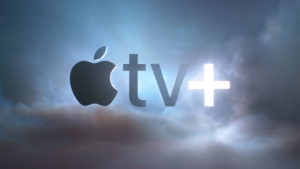
How much is a “bounce” worth on a tablet PC? It could be worth enough — along with other patent disputes — to add up to US$2.5 billion. At least, that’s the figure Apple came up with in its patent infringement suit against Samsung, and it all comes down to the bounce, the scrolling API, and finally Samsung’s use of Apple’s “design patents or trade dress rights,” according to Foss Patents, which compiled the per-unit royalty dispute.
This figure is what Apple believes it is due as a per-unit royalty as part of its intellectual property lawsuit with Samsung over the Galaxy Tab 7.7.
If this isn’t confusing enough, the case gets more complicated as an injunction awarded by a Dusseldorf appeals court on Tuesday apparently conflicts with a previous ruling from a UK court. In another dispute in America, a U.S. district judge has tried to convince the two parties to settle, but for now a trial is scheduled be begin in federal court in San Jose, Calif., on Monday.
“It is not surprising that different courts — in different countries, especially — would reach different results, said R. Polk Wagner, professor of law at the University of Pennsylvania. “Patent law is very complex, and although most developed countries have similar patent systems, they are definitely not the same. Thus, the patents Apple and Samsung are fighting about are not necessarily the same across the world.”
Apple and Samsung did not respond to our request to comment for this story.
Suits and Countersuits
What complicates the situation even further is that Samsung’s patents apparently cover some adopted industry standards, which means that Samsung competitors generally agree to pay a reasonable royalty for using them.
“This is a complex case because it involves Apple asserting both design patents and utility patents,” said Andrew Beckerman-Rodau, professor of law at the Suffolk University Law School. “And Samsung is counterclaiming that Apple is violating several of its utility patents.
“At least from press reports, it seems that Apple used the Samsung patents without paying the royalties,” Beckerman-Rodau told the E-Commerce Times. “My guess is that the dispute will devolve to the amount of royalties Apple has to pay Samsung for using the patents.”
Additionally, it could come down to whether a judge decides that the aesthetics can be patented, which could be akin to trying to suggest that a patent includes the size and shape of a flat panel TV.
“Apple has been very aggressive in using design patents which only cover the exterior ornamental appearance of their iPad and other devices,” said Beckerman-Rodau. “Such patents do not cover functional aspects of their devices. Of course, this makes sense, because Apple is known for making devices whose appearance is aesthetically pleasing. Of course, such design patents can be more easily avoided, typically, than utility patents, which cover functional aspects of a device.”
Patent Resolution
U.S. District Judge Lucy Koh has previously tried to persuade the parties involved to settle out of court, which doesn’t seem likely at this point. But is this really down to saber rattling?
“Certainly, this will eventually be resolved — likely by both sides eventually figuring out that international litigation is a huge drain on attention and cash, only serving to benefit the competitors of both companies,” said Rob Enderle, principal analyst of the Enderle Group. “Eventually, they’ll have to come to the table and cross-license. It just often takes a long while for both sides to reach a point where they realize they are looking ridiculous and are wasting tons of time and money.”
Until that moment comes, this is likely to put the patent dispute in the spotlight — for good or bad.
“The ongoing battles between Apple and Samsung offer testimony to three points,” said Charles King, principal analyst at Pund-It. “First, the generally confusing state of intellectual property and patent law in the IT industry; second, confusion in the interpretation of those issues in various countries and global regions; and third, the degree to which fierce competition between two tech behemoths can turn these contentions into a confusing series of global smack-downs.”
Even resolution in this matter will only likely be followed by new complaints and future cases.
“Unfortunately, I believe this is indicative of a new competitive trend — especially in the case of IT vendors closely matched in intellectual and financial assets like Apple and Samsung,” King added. “But if it continues to escalate in vehemence, it won’t be long before ‘injunction’ replaces ‘innovation’ as a guiding principle in technology.”
Risk vs. Reward
How far this will go really depends on whether one party or another thinks it can win — and at the same time not spend a fortune to win what could be a dramatically smaller sum of money than it sought to get. As is usual, the winners aren’t either of the companies involved.
“The real winners here are the lawyers,” tech industry analyst Jeff Kagan told the E-Commerce Times. “To you and me, this is real money, but to them this is just play money as they try to win the game.”
However, the risks of where this could lead — beyond just the money — could be what might make the companies involved — in this case Apple and Samsung — reach an agreement.
“I think we are still in the early stages of the litigation — at the preliminary orders stage, not the final decisions,” added Wagner. “So I’m not sure I would read too much into any individual result at this point. I expect this will be a long process, but that eventually the parties will settle most of these cases. The risk is too high to leave the decision to courts.”
With that in mind, the most likely situation is that the rattling of sabers continue, the companies do a back-and-forth dance, and then resolve — with both parties claiming victory or satisfaction. And those lawyers cashing big checks.
“How will it end? Who knows,” added Kagan. “The way these things typically go is if one company was wrong, the ruling goes against them and then they have to pay some kind of fee to the other company to use the technology. Either that or they make a change in what they offer to eliminate that technology. But either way, it’s not really that big of a deal. It usually gets settled, and both sides move on in the competitive space. Today it appears Apple and Samsung are enemies. Tomorrow they could be partners. Crazier things have happened.”











































Social Media
See all Social Media